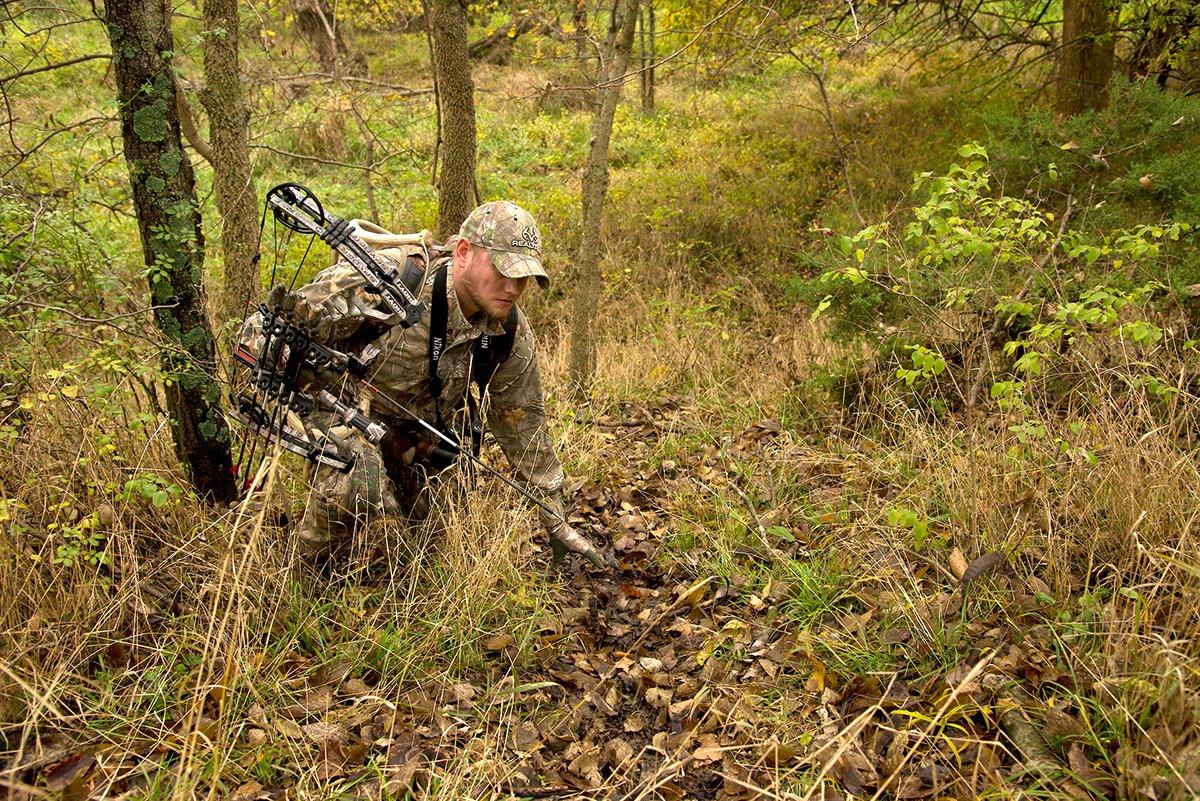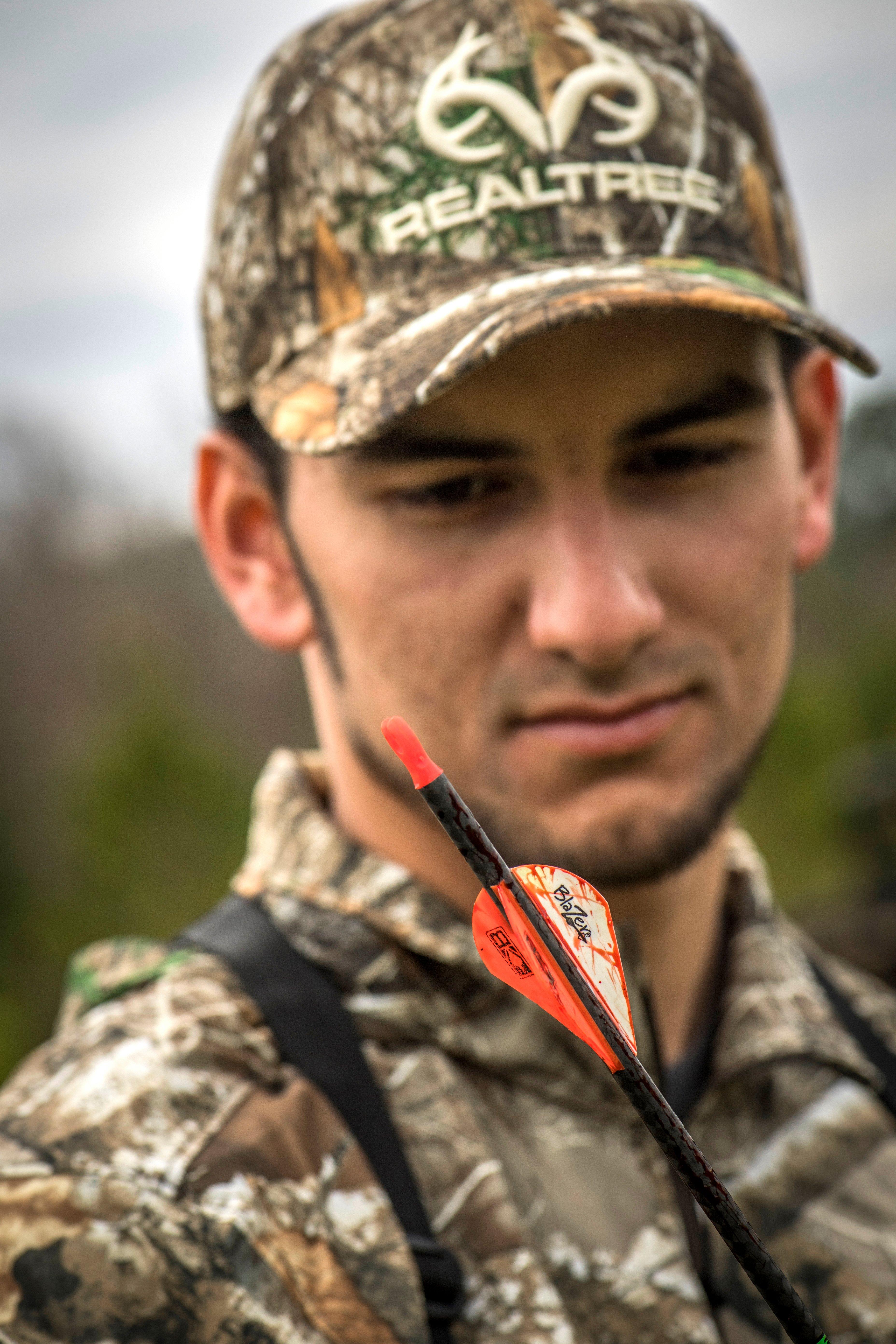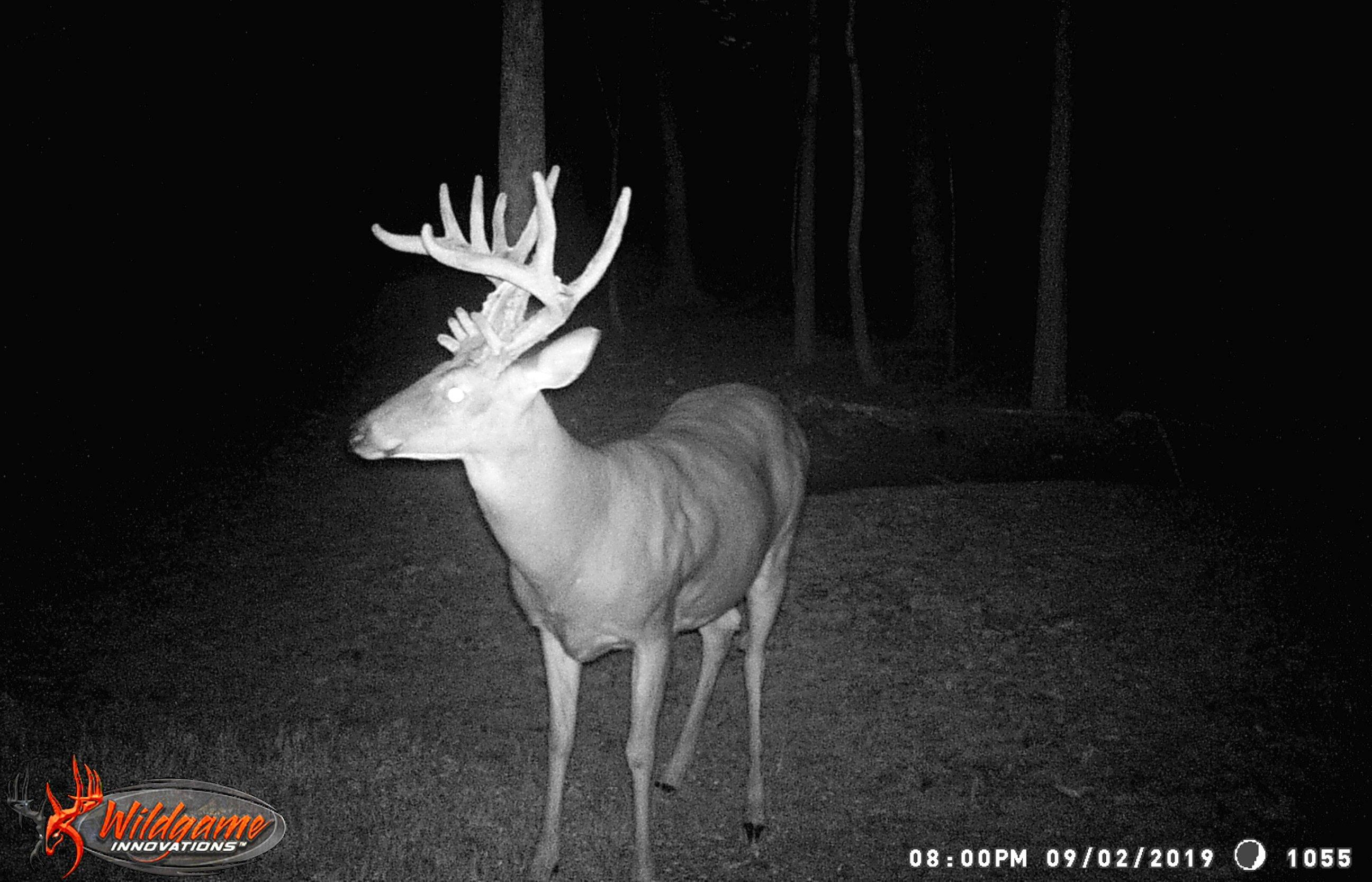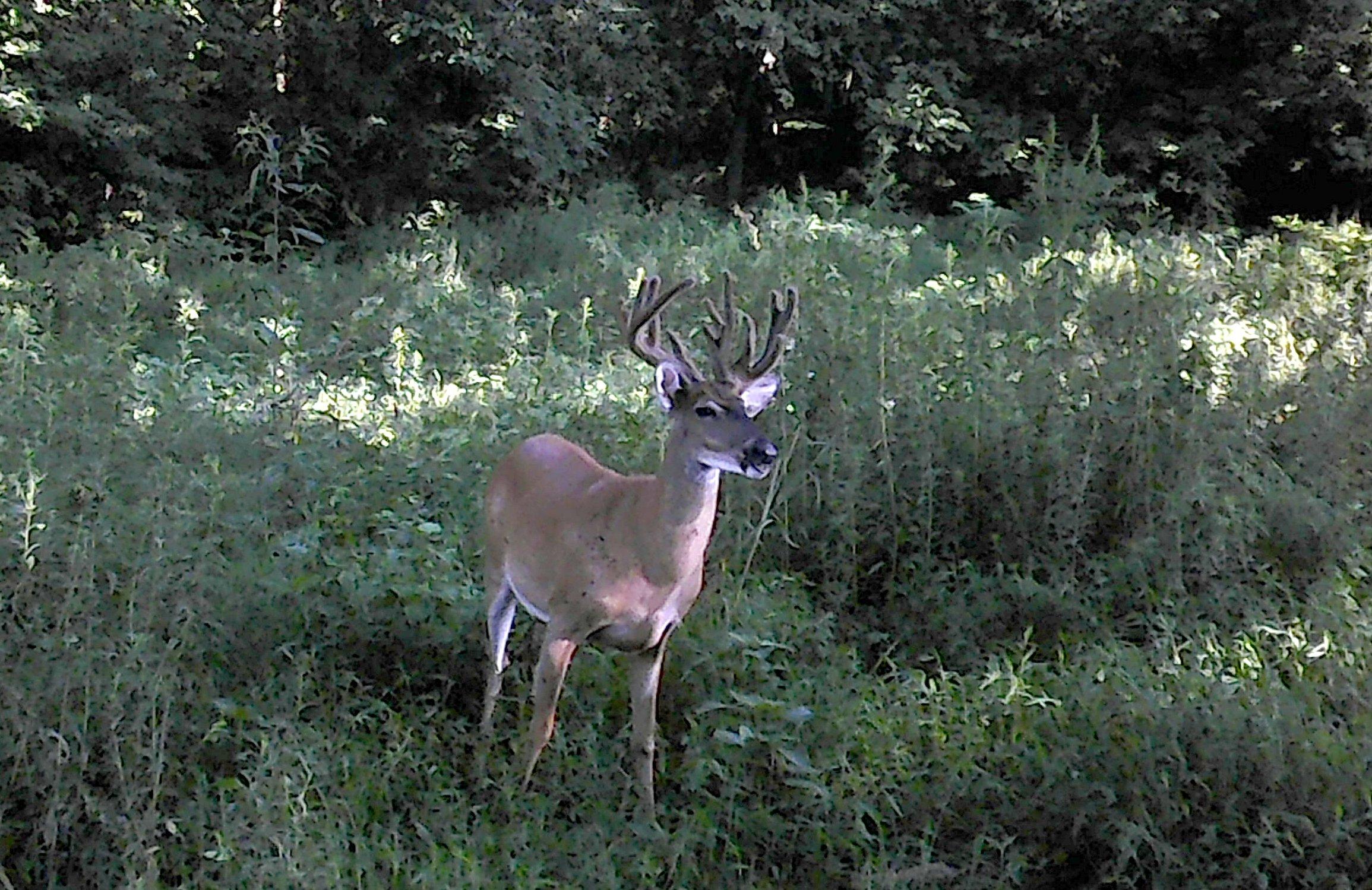Here are takeaways from bucks the author shot and didn’t find — and deer he should’ve shot but didn’t

You win some, and you lose some. That’s part of deer hunting. But every missed opportunity offers a lesson. Image by Realtree
Folks who hunt long enough will lose a deer. If they hunt longer, they’ll lose multiple deer. They might even hunt a deer they should’ve tagged but never got a shot at.
Those “lost” deer that get away provide important lessons. Here are seven such stories I’d like to forget but have instead learned from.
1. The Cornfield Houdini: Keep Shooting Until That Deer is Dead or Gone
During the 2007 youth weekend in Kentucky, my father and I set up on the ground overlooking a big cut cornfield. About midafternoon, a tall 8-pointer stepped out and started feeding. I settled the cross-hairs on my .243 Win. and lobbed a ball of lead downrange. I heard it smack the deer, and the buck fell over without a kick or twitch.
I jumped up and celebrated, none the wiser that my happiness would soon fade. I gathered my gear, and just as Dad and I started across the cornfield, that buck stood and slowly walked away. Mouth open, I stared in shock as that “zombie” buck disappeared over the hill, never to be seen again.
Lesson learned: I searched for two days, even taking off from school to do so. But I never found the buck. Looking back, I believed the hit wasn’t lethal but struck close enough to the spine to shock the buck’s central nervous system, rendering it temporarily paralyzed. When it regained mobility, the buck got up and departed. I should have taken follow-up shots until the deer was dead or gone.

Sometimes, the blood trail dries up. Image by Realtree
2. The Sinkhole Slinker: Don’t Get Tunnel Vision When a Good Buck Walks Out
Later that year, during gun season, I was still carrying my 2007 buck tag. Toward the end of the modern rifle window, I spotted a good buck chasing a doe around a sinkhole. I stalked within .30-30 Win. range and shot that buck.
A few minutes later, some family members and I started blood trailing the deer. Just as I found the buck, my uncle and cousin spotted a massive buck as it jumped up out of the sinkhole. The deer and the estrous doe ran across the road and out of sight.
Lesson Learned: You never know when another buck is nearby. In that case, it was the rut, and although I was happy with the 125-inch deer I tagged, that 170-incher locals called “The Hartford Buck” would’ve looked even better on the wall. Unfortunately, I didn’t know he was 40 yards from the buck I shot. Always be on the lookout for more deer, especially before pulling the trigger.
3. The I-Should’ve-Been-There Buck: Hunting by Permission is Great but Can Stink
In 2008, I started my midday trek into a promising rut-hunting spot overlooking a well-used pond. Just as I was about to sit, the landowner arrived to hunt the same area.
Of course, I was disappointed. But I was there hunting by permission. So I packed my gear and went to another part of the farm. Just as I settled into plan B, I heard a .300 Win. Mag. echo through the valley. A few minutes later, I got a close look at the big 13-point buck that could’ve been.
Lesson learned: Hunting by permission is great. It costs much less than land ownership and leasing. If you can obtain it, great. And good on the landowners who still allow it. But it comes with downsides, too. Sometimes, permission properties are best used as backup tracts rather than primary hunting spots.

The author had to watch as this buck ran across the property line and got shot by another hunter. Image courtesy of Josh Honeycutt
4. The Safety Screw-Up Buck: Go Through Your Shot Routine at the Start of Each Hunt
In October 2011, I had a terrible vehicle accident. My truck’s ball joint and tie-rod blew, and the vehicle veered off the road at 55 mph. I hit a ditch, and the truck flipped end over end seven times before ejecting me into the bed of the truck. (Wear your seatbelt, folks.) I got a helicopter ride to a hospital two hours away, with elbow surgery to follow.
Weeks later, gun season arrived, and I was determined to hunt. So, with arm in sling, I lined up my Marlin 336 XLR and camped out in a box blind. A couple of days in, I watched the wide 8-pointer I’d been eyeing run into the field. A bleat stopped him at 50 yards. I settled the cross-hairs and pulled the trigger. Click. (I never switched off the safety.) In the millisecond it took to realize and remedy my error, the deer turned and dashed. Thirty minutes later, I watched as he ran across the field again, but 400 yards away. Seconds later, the buck crossed a property line, and a neighboring hunter shot it.
Lesson learned: I should have been more prepared. Had I gone through my shot routine at the start of the hunt, I might’ve remembered to hit the safety when that buck stepped out. Instead, my nerves got the best of me, and my neighbor got the best of that buck.
5. The Public Hiccup Bucks: Know When to Stay and When to Go
In 2014, I hunted public-land whitetails in Kansas. I spent a week at several great Walk-In Hunting Area tracts and spotted some studly whitetails. The problem? I was too loyal to the spots I picked out. Twice, I spotted two or more bucks use other trails before I decided to get down and move.
Lesson learned: Deer use trails for reasons. If patterns emerge, make the move before it’s too late. Know when to stay and when to go.

After several years of monitoring this deer, he finally got a shot at the buck. A leaf ruined it. Image courtesy of Josh Honeycutt
6. The Swamp Set Debacle: Always Gauge Your Arrow Flight Path
The 2019 season produced a shot opportunity at what would’ve been a giant buck for me. It was a deer I called “Tanker.” I already had four years of history with it.
It was the early season, and my area had experienced drought-like conditions. I set up over one of the best remaining watering holes close to bedding cover. On cue, the buck walked in, and I took the shot. Instead of 12-ringing him, my arrow struck the back leg and only managed a couple of inches of penetration.
Lesson learned: Looking back at the self-filmed footage, my arrow clipped a leaf. I didn’t think it would hit it, but it did, causing a poor shot. Always gauge your arrow flight path. Fortunately, the superficial hit didn’t hurt the deer too badly. He lived at least three more seasons and might still be alive.

The landowner allowed the author to scout this property in summer, and even though he would’ve given this deer another year or two before hunting it, he should’ve leased the tract and let it sit. Image courtesy of Josh Honeycutt
7. The Almost Lease Buck: Don’t Pass on Great Opportunities
In 2020, in the heart of the COVID-19 debacle, I scouted a property I had the opportunity to lease. I already had one lease and several permission properties. I wasn’t hurting for hunting ground. But the landowner was passive about leasing it and allowed me to hang some trail cameras to gauge the property.
Upon pulling SD cards, I was immediately shocked with photos of a 3½-year-old nontypical buck with points going everywhere. It probably scored 150 to 155 inches. So, a conundrum arose. Lease the property and leave it unhunted for a year to let that buck reach record-class status? Or pass on the opportunity in hopes no other hunter would lease it, and jump on it the next season?
I gambled and didn’t lease the property. Much to my disappointment, another hunter did. As you might guess, that property didn’t come available again the next summer.
Lesson learned: When a great opportunity opens, jump on it. If I had that opportunity again, I would gladly throw down the cash to let that buck age another year. Chances at record-class deer are rare.
Without question, we learn lessons in the deer woods. Hopefully, we remember those and bank them for future reference. When you do that, hard experiences aren’t for nothing. Lessons from lost bucks or lost chances shape us into better hunters.
Don’t Miss: 15 WORST EXCUSES FOR UNFILLED DEER TAGS












